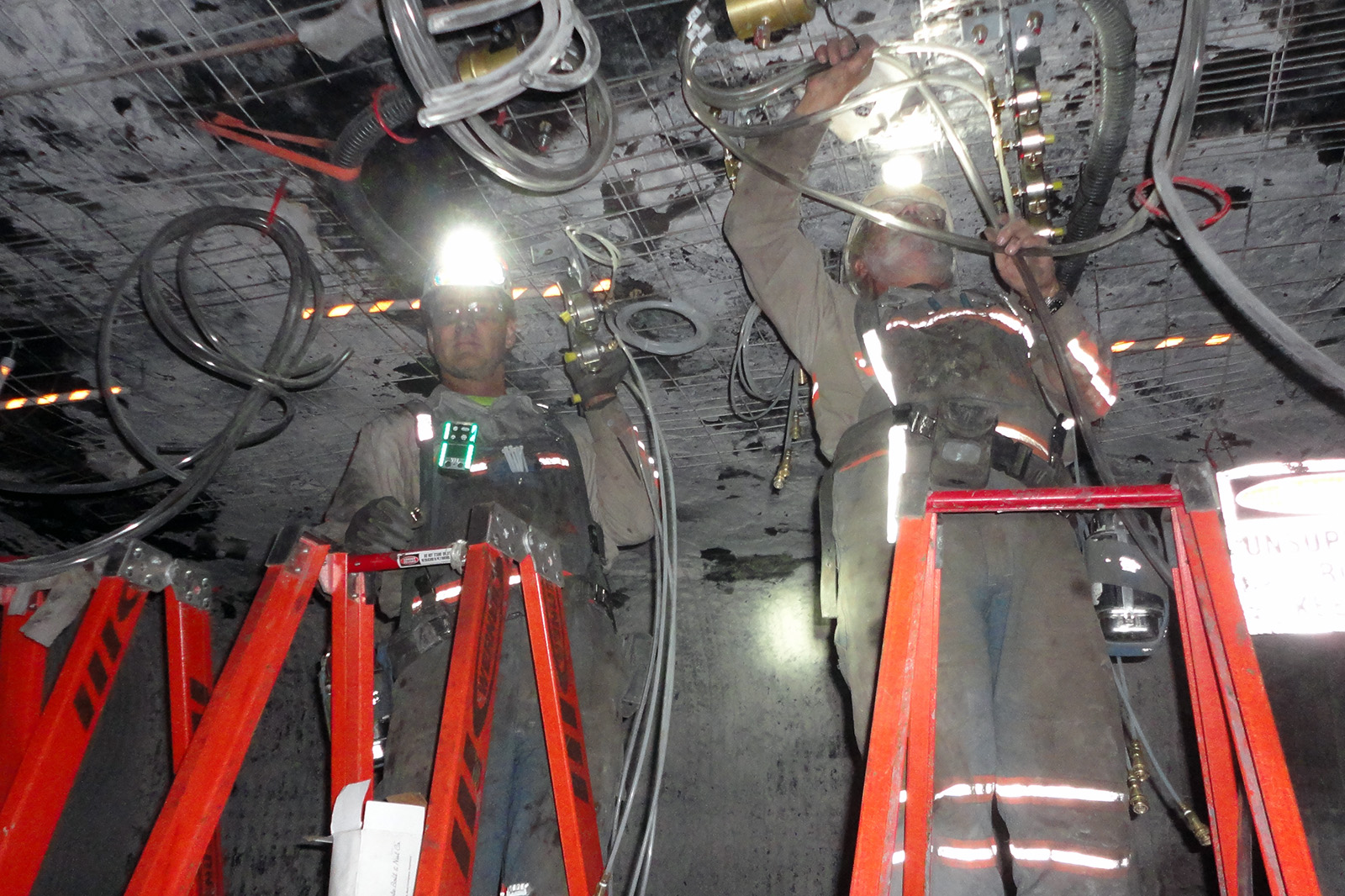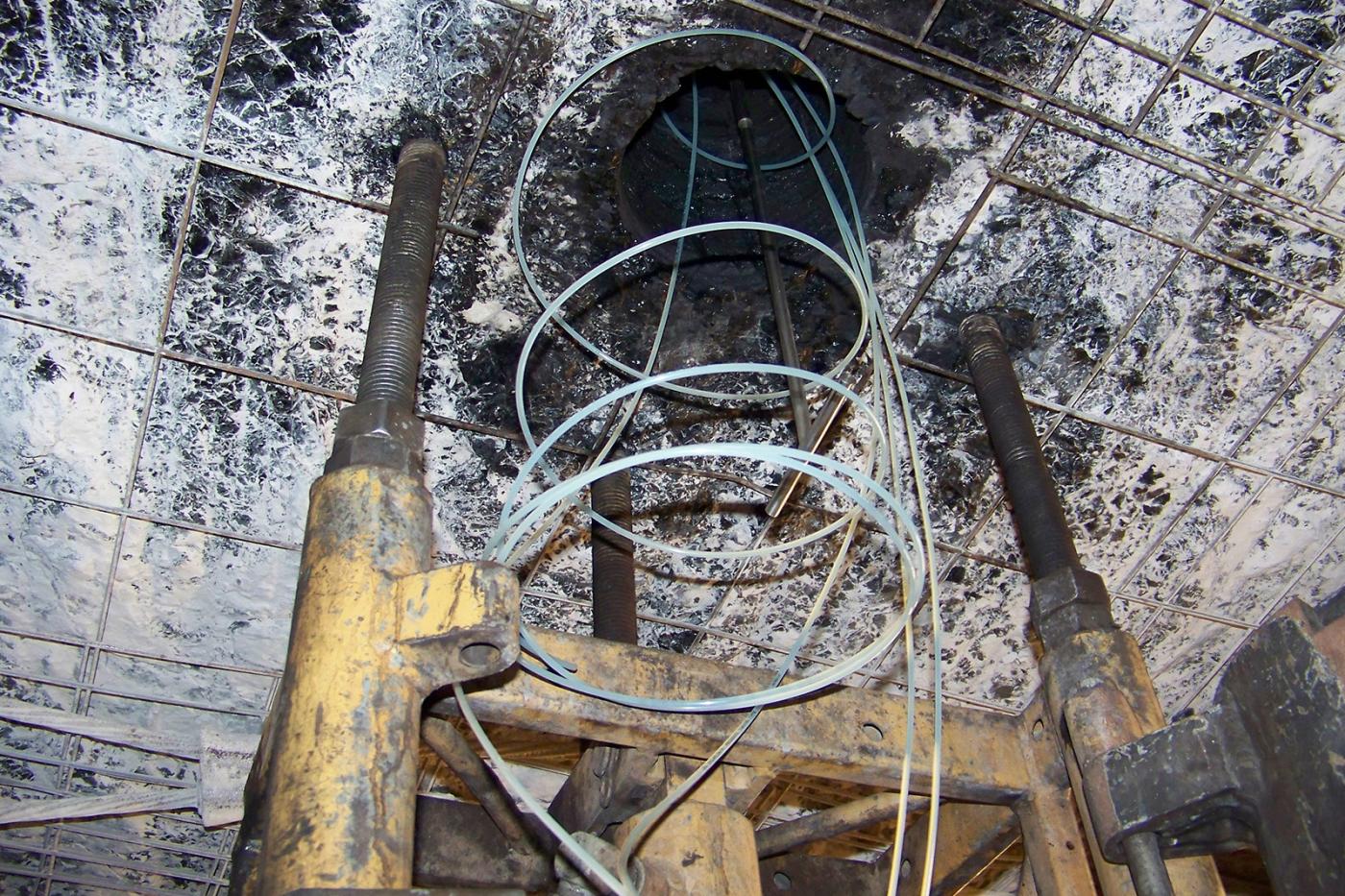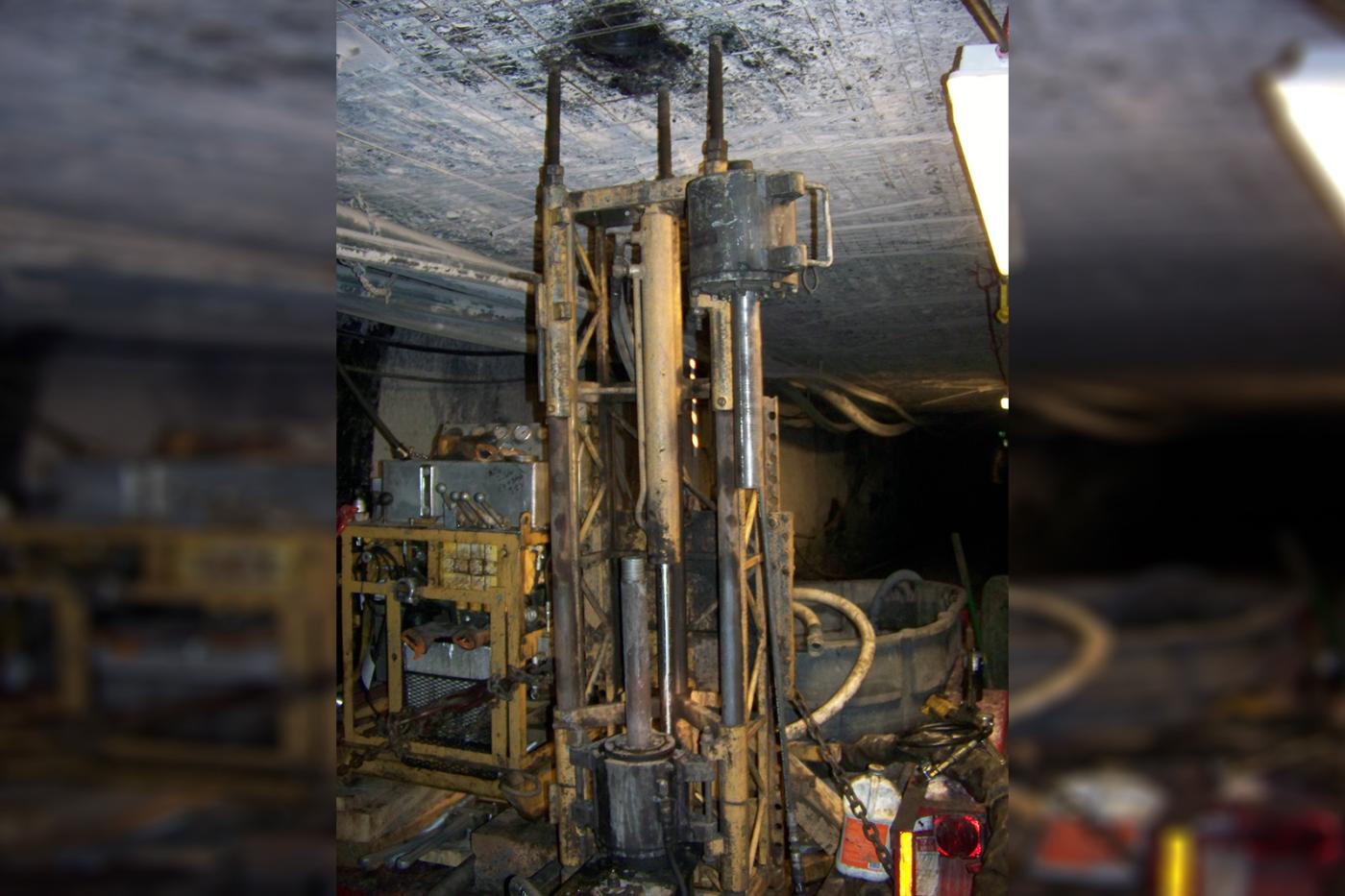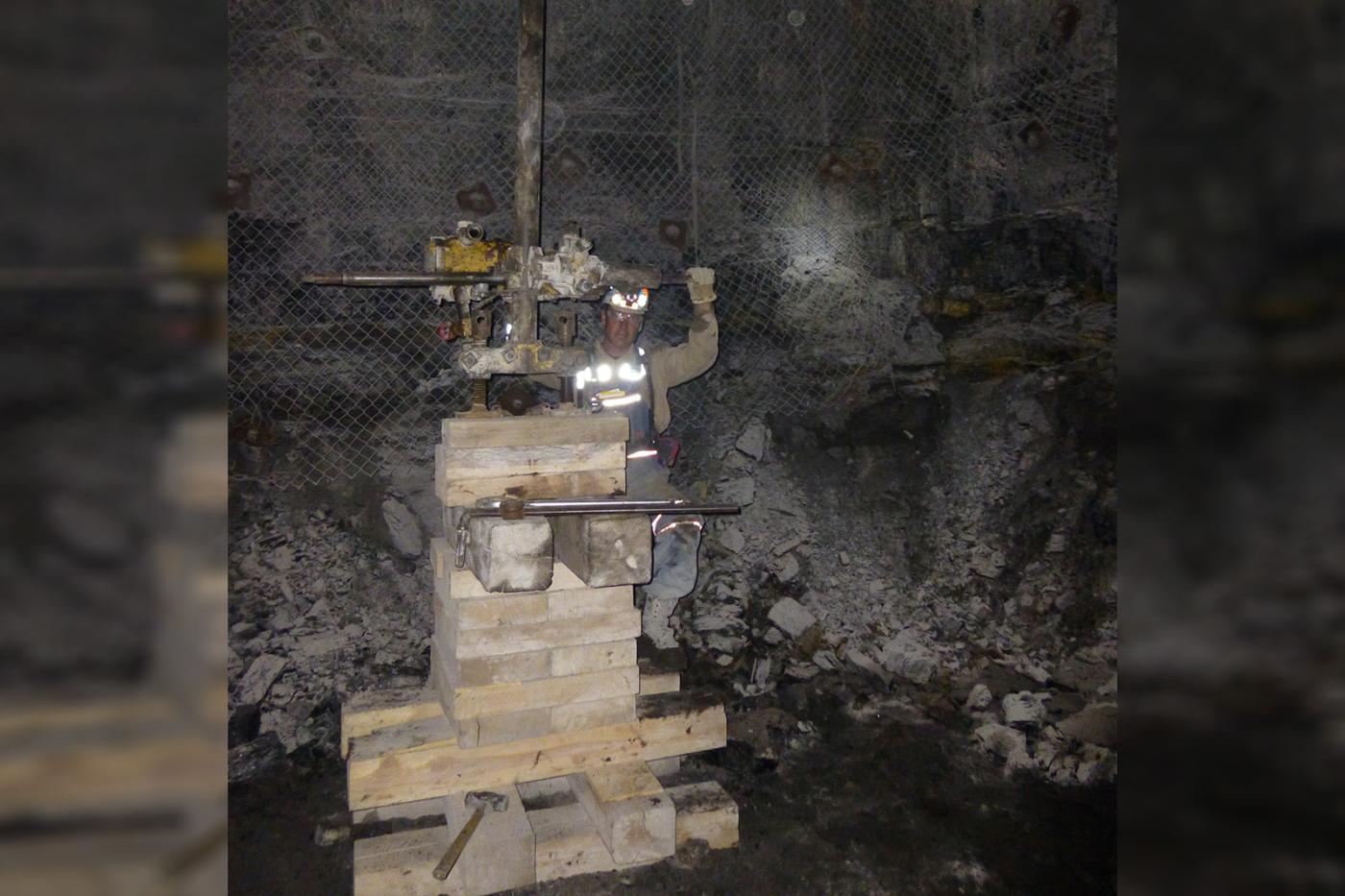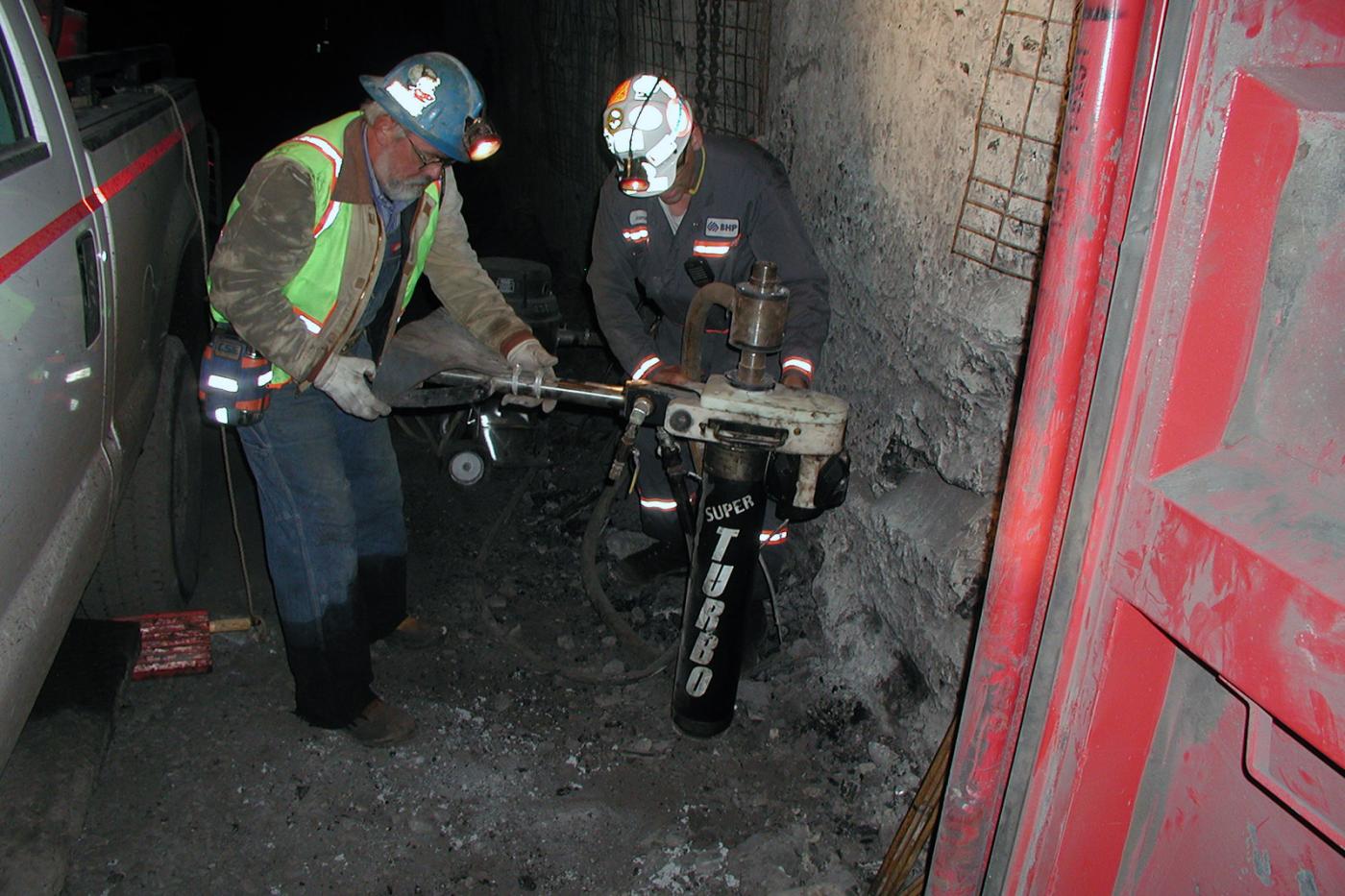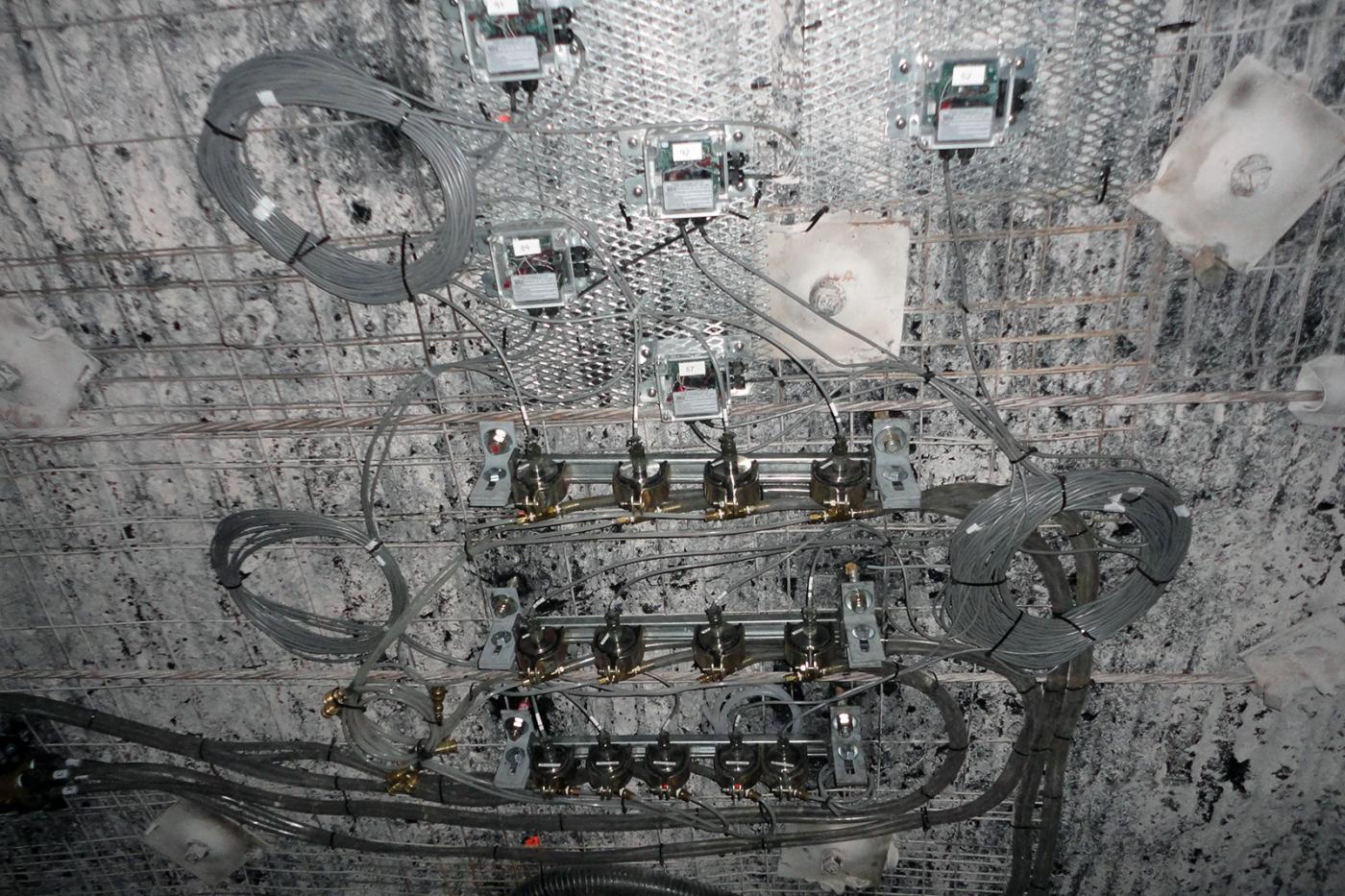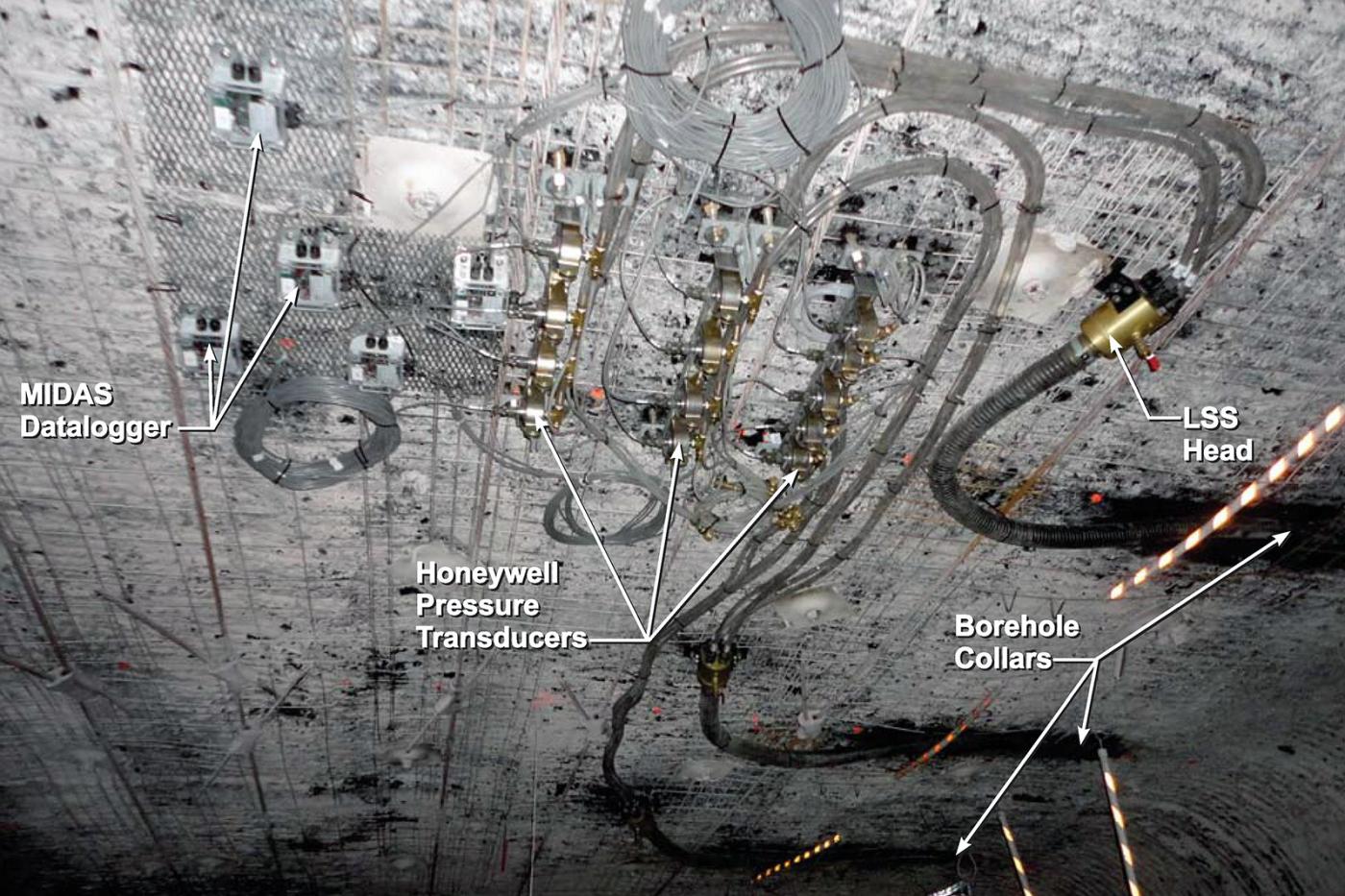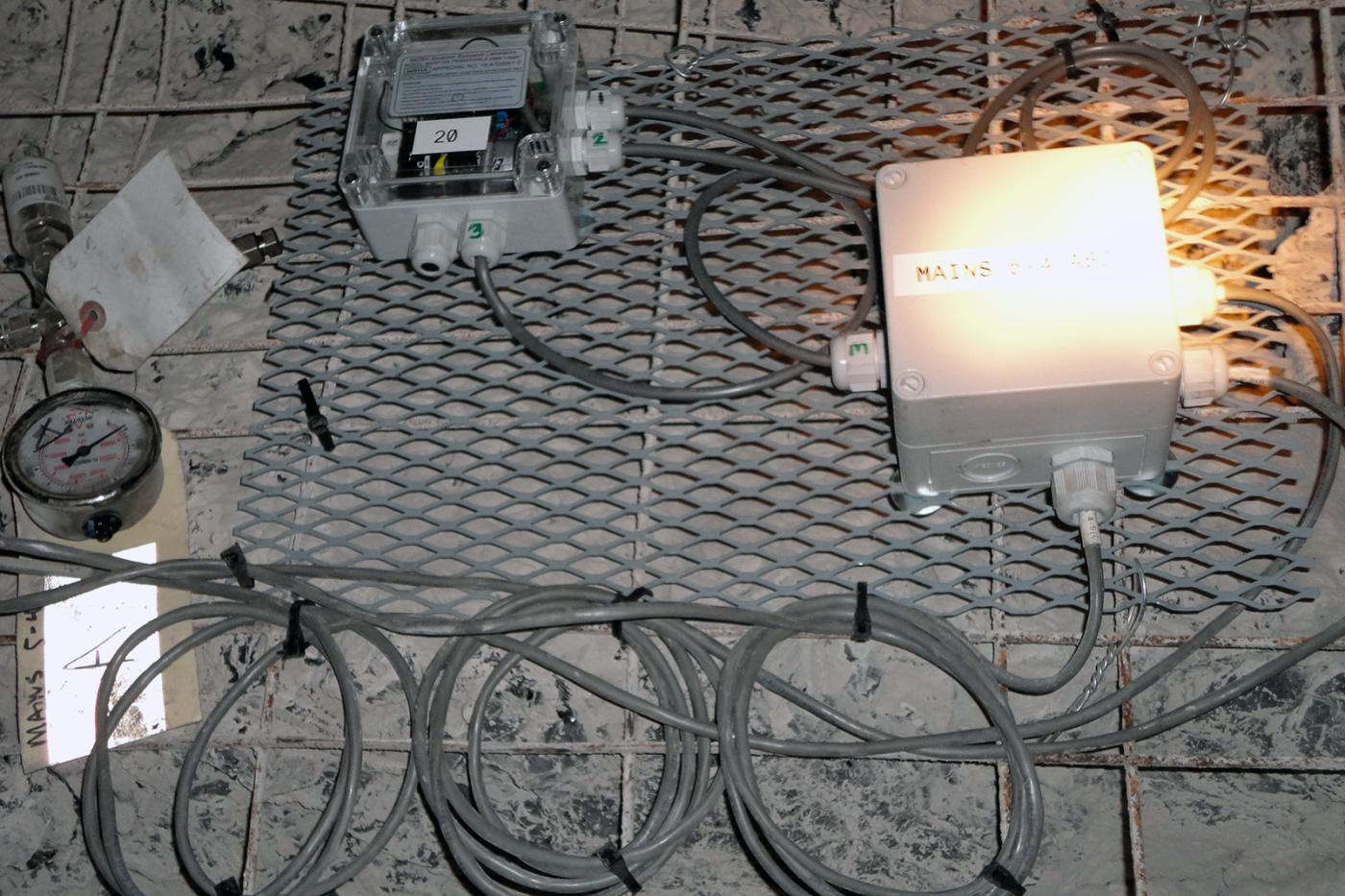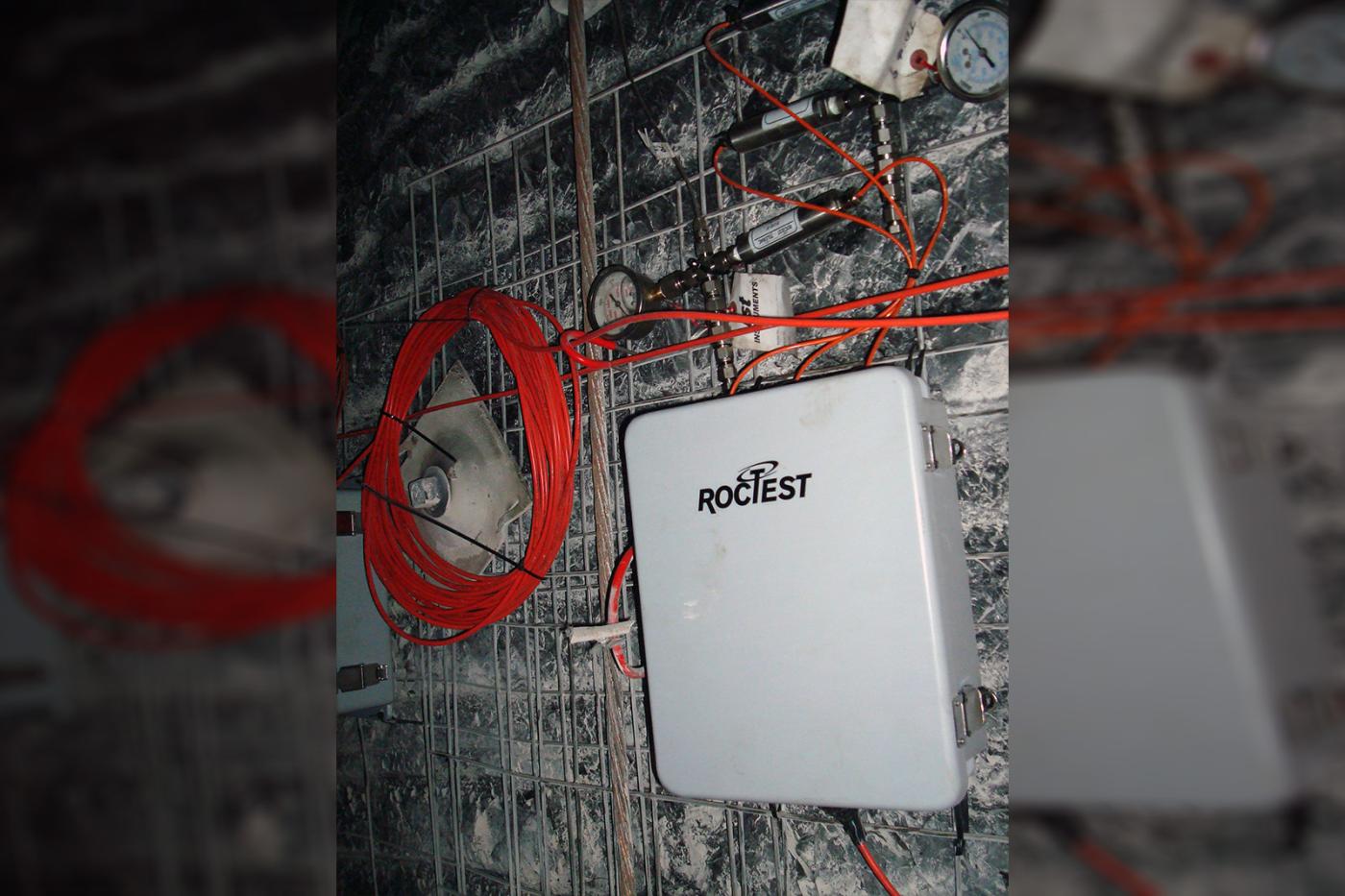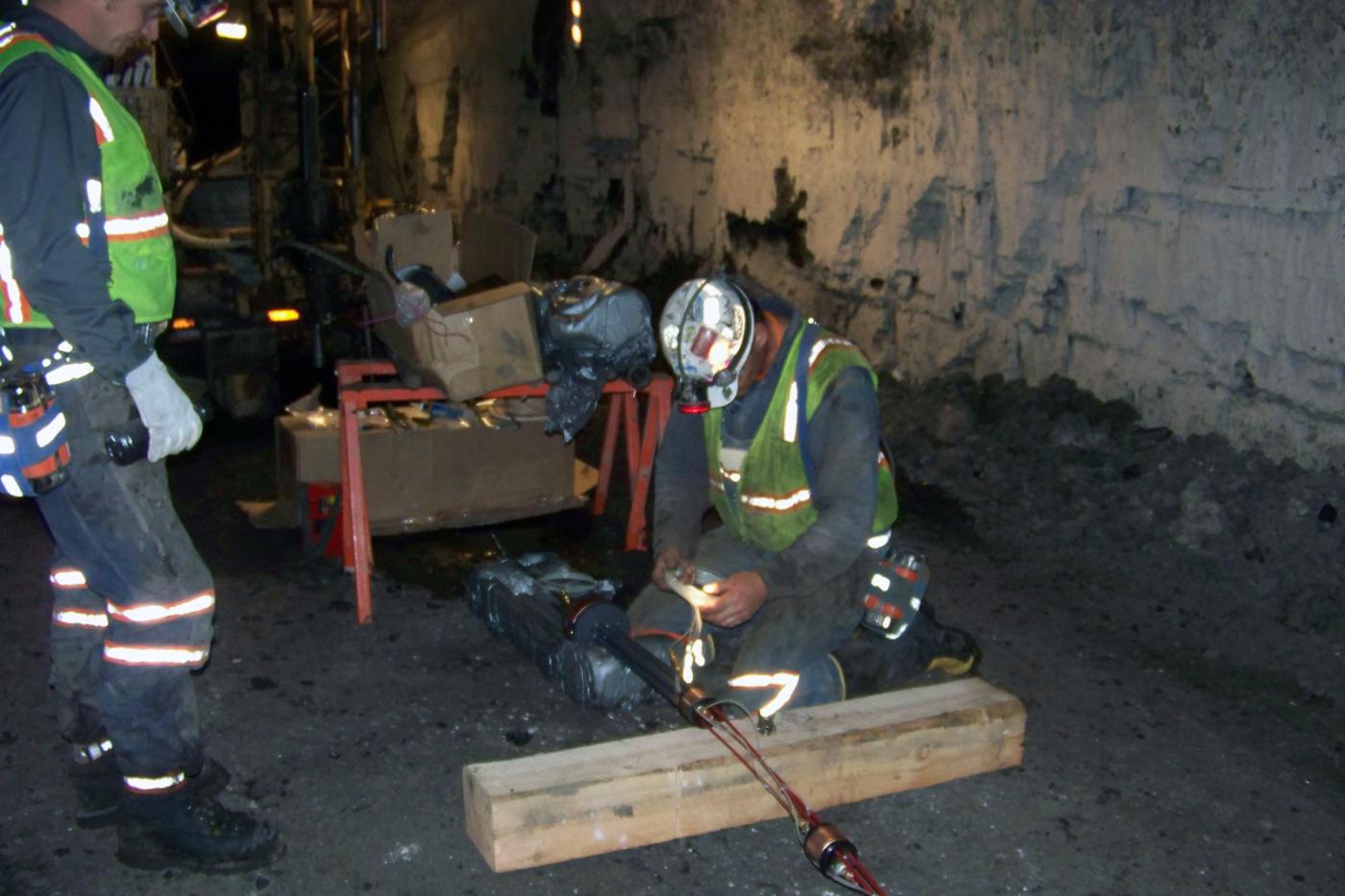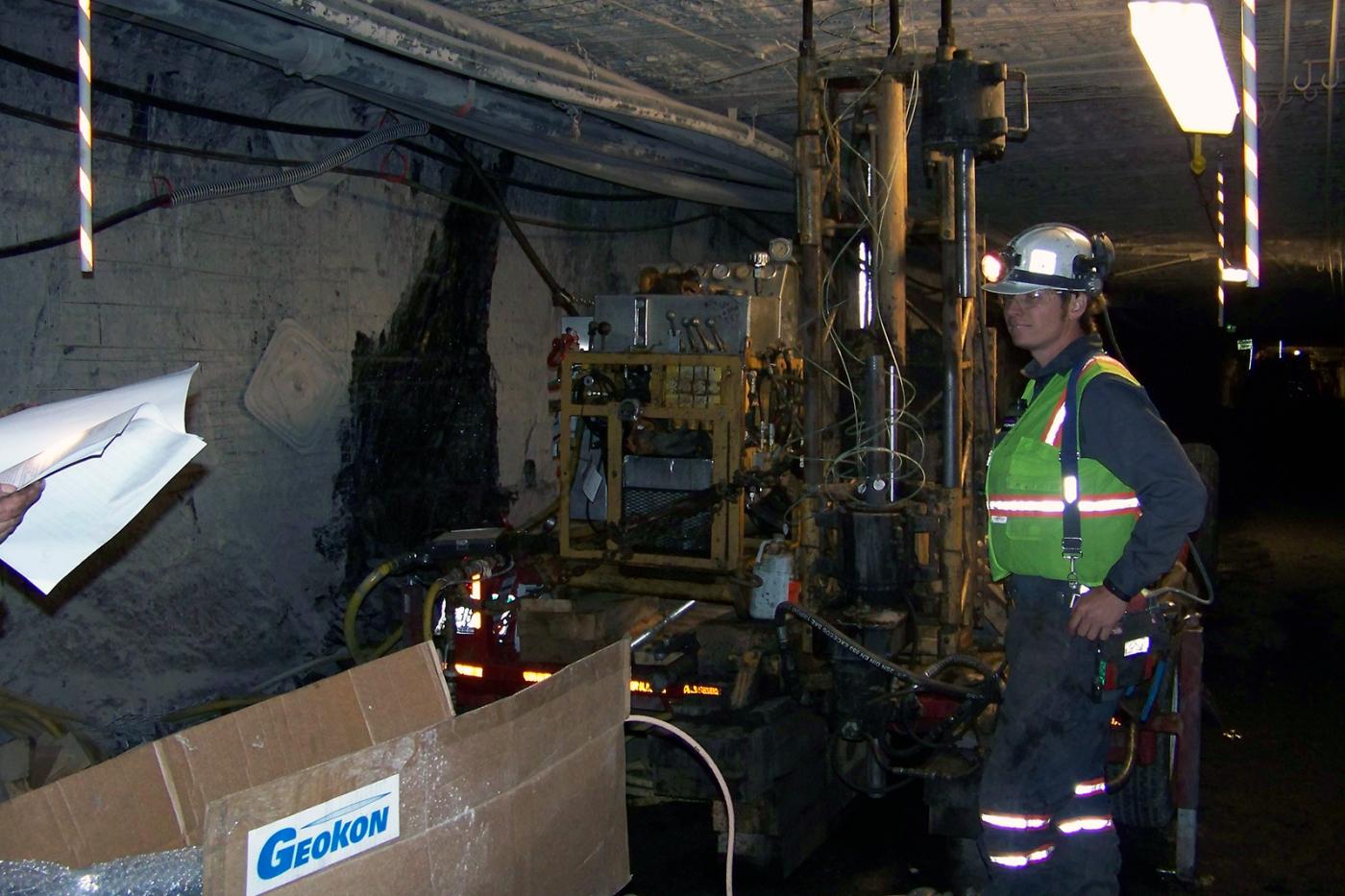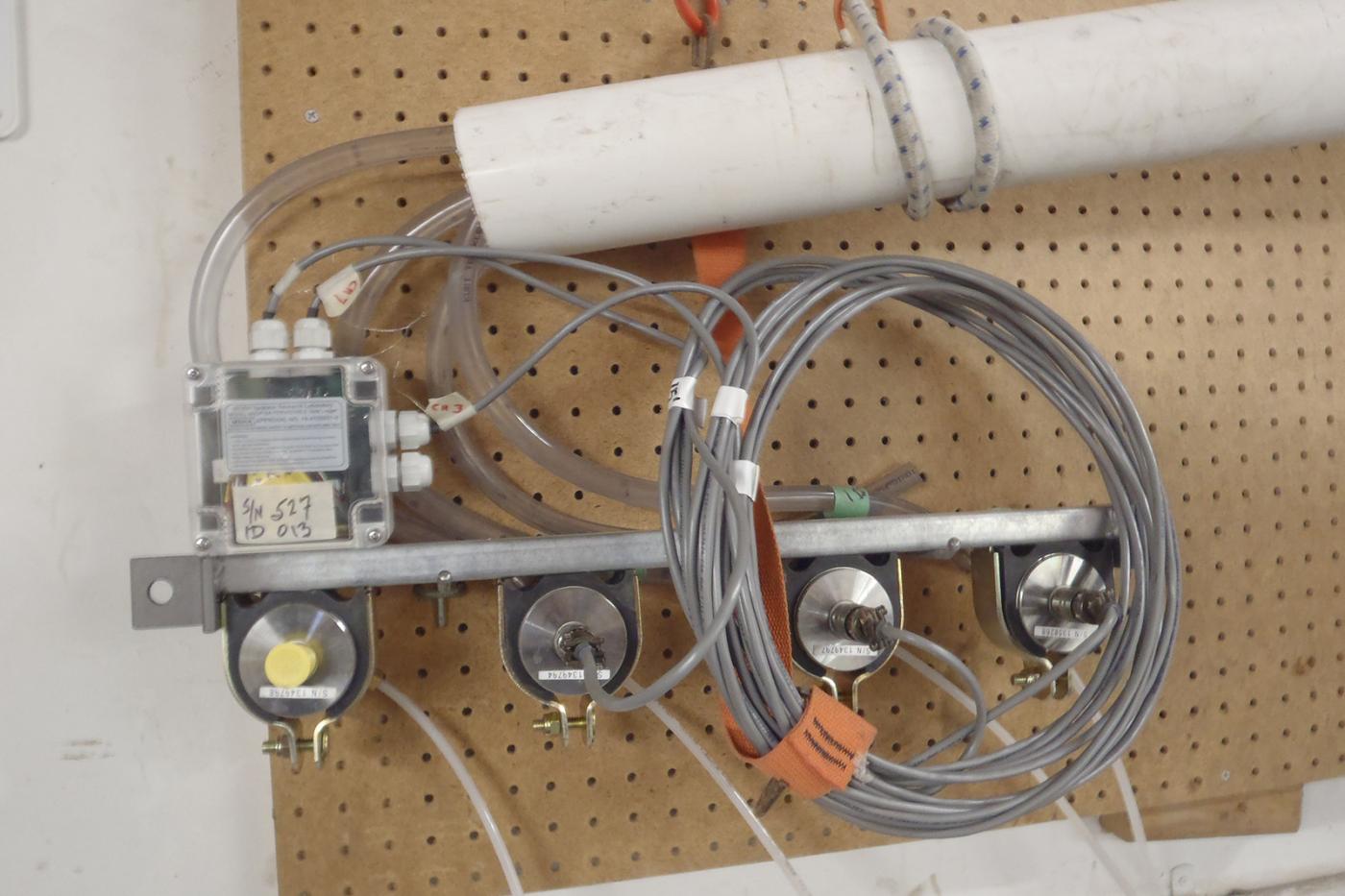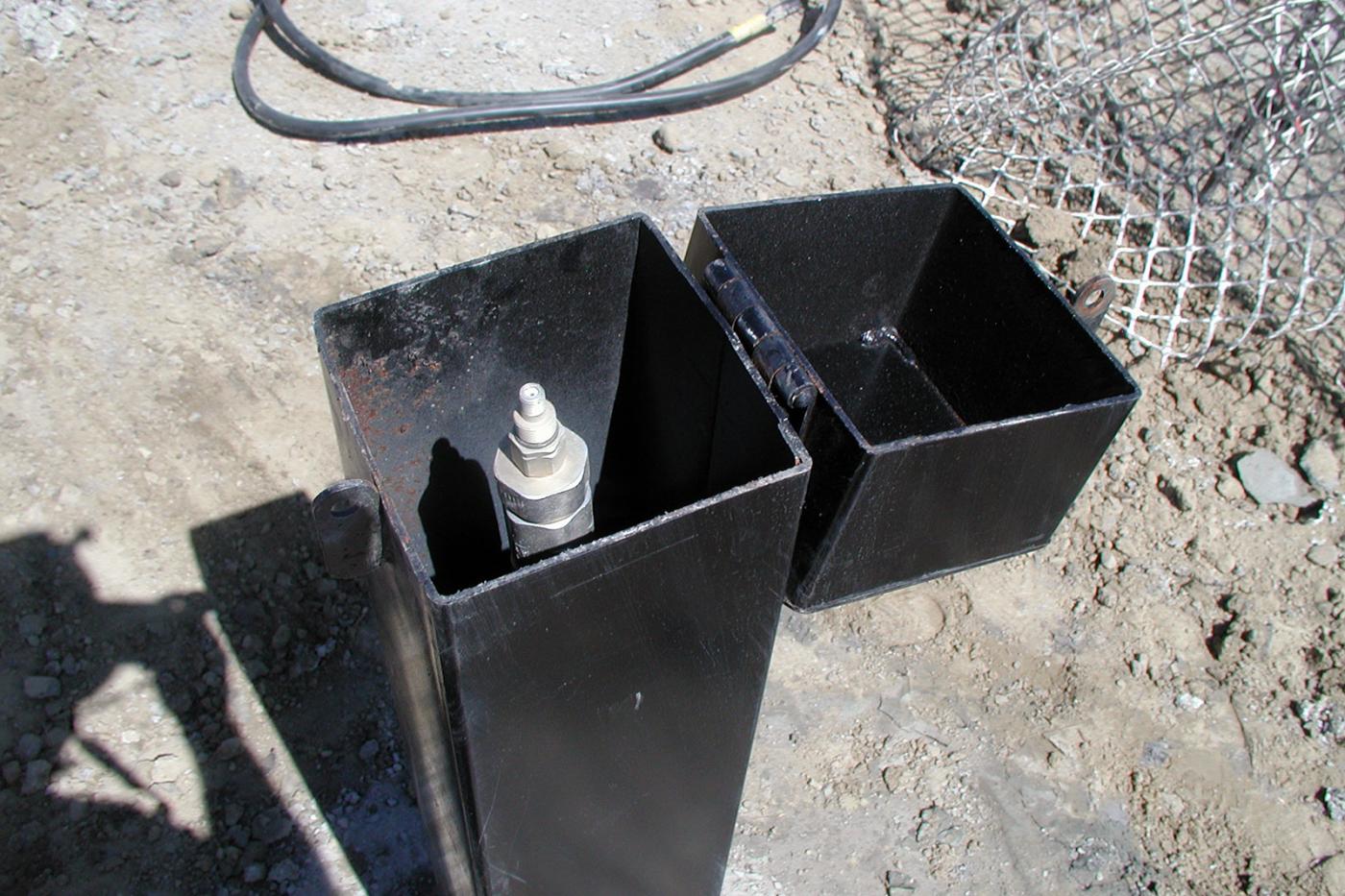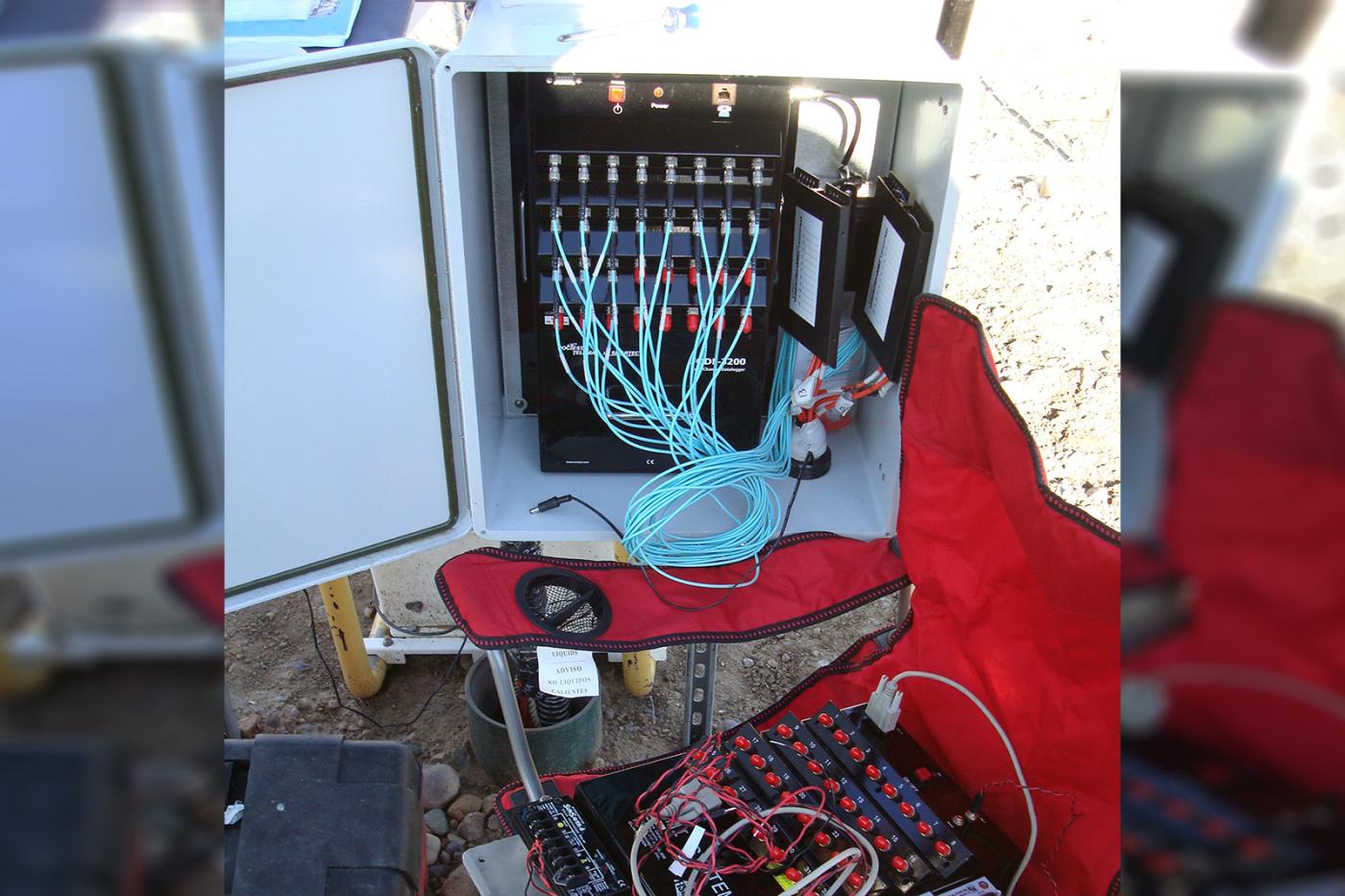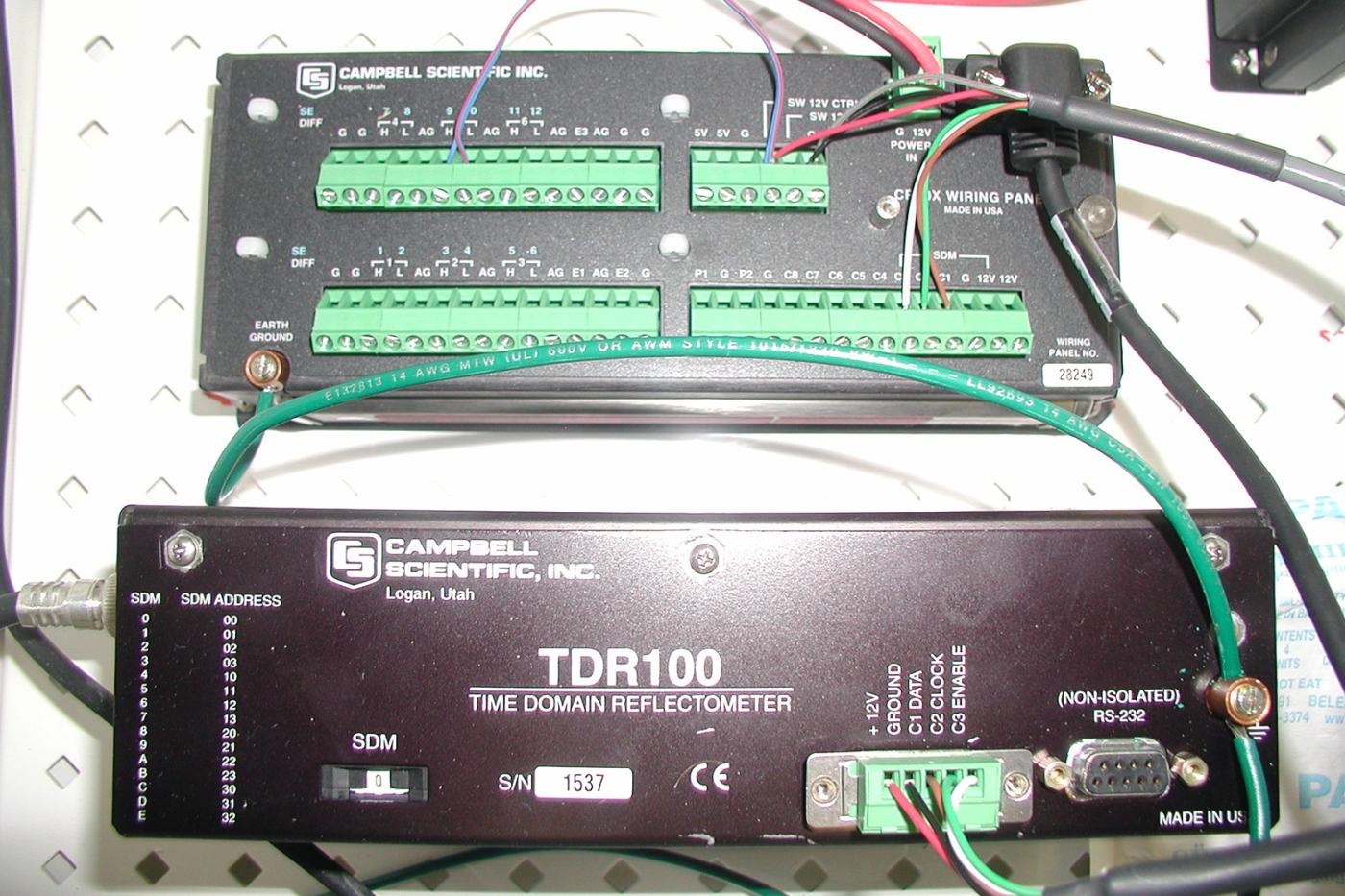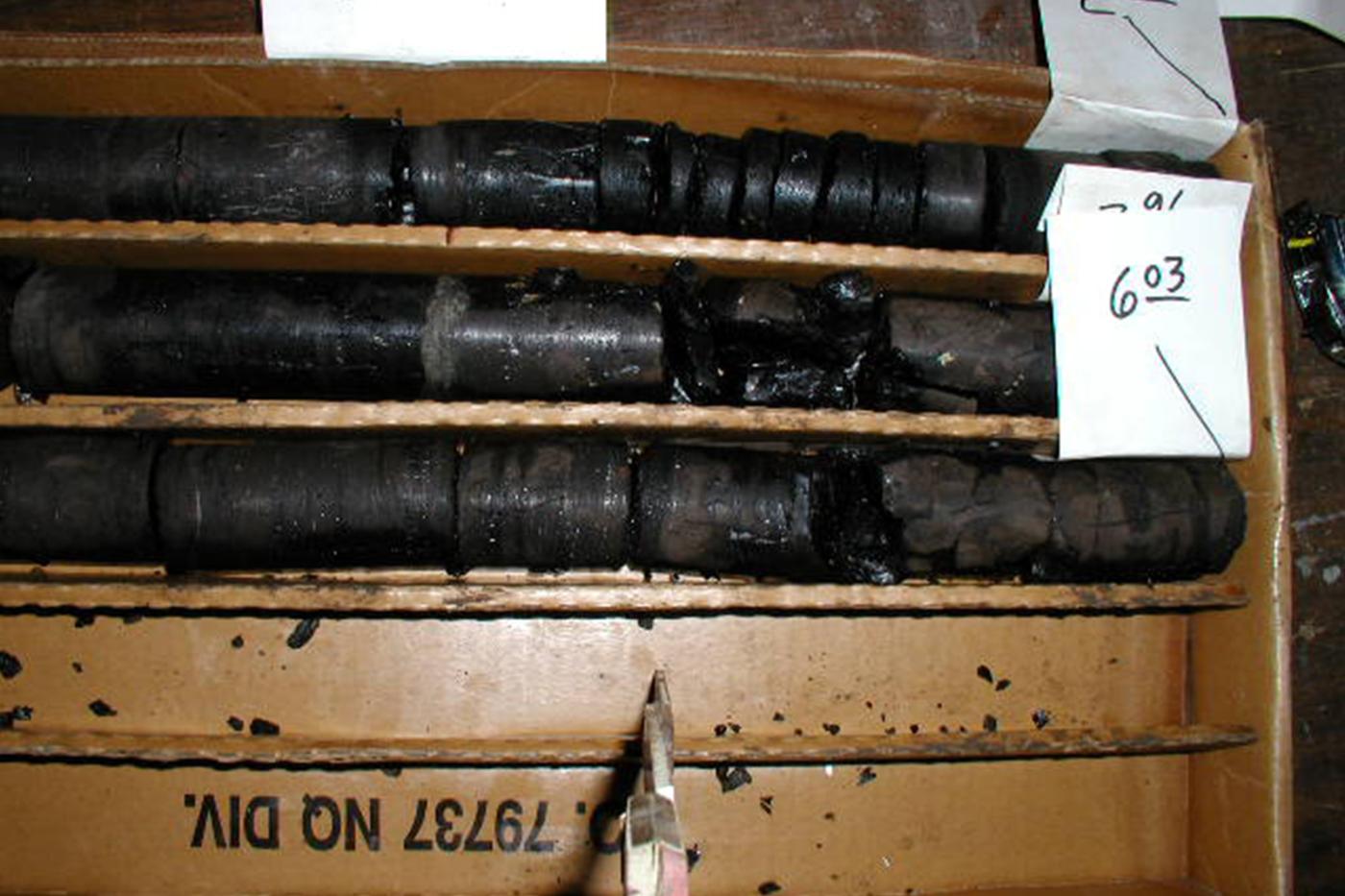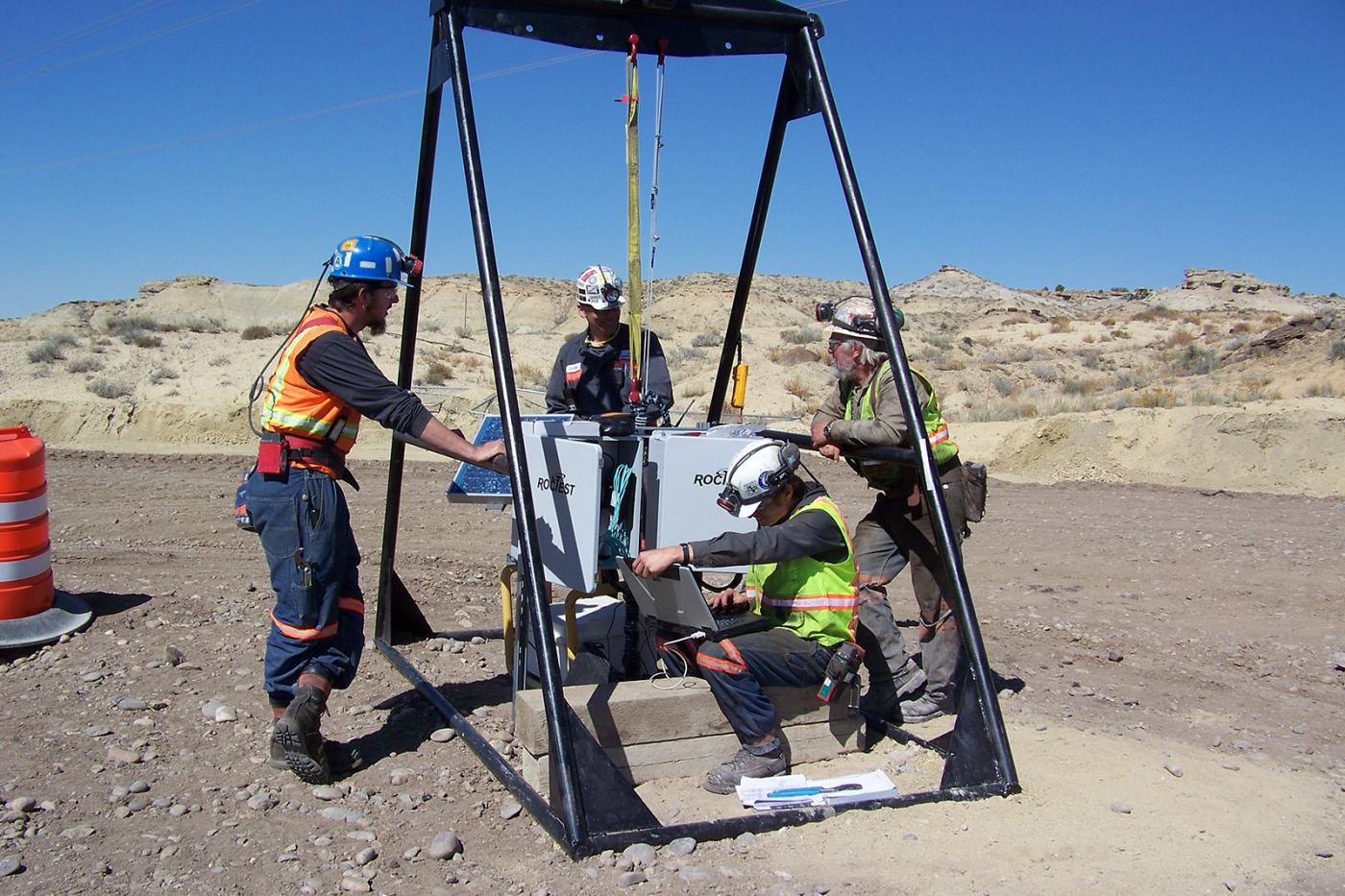DA Smith* procured, installed, and monitored geotechnical instrumentation for measuring rock stress and deformation adjacent to the first longwall panel at the BHP San Juan underground coal mine (now owned by Westmorland Mining, LLC). Instrumentation included 160 encapsulated borehole pressure cells (BPCs), 14 hydraulic load cells installed on cable bolts, 14 sonic probe extensometers installed in 20-foot holes with 20 magnetic anchors, 31 triple-anchor tell-tales, and 45 roof-to-floor convergence stations. DA Smith's pneumatic Longyear CP-65 was used to drill in NX core holes 20 feet into the roof and 10 feet into the floor at 5 locations. All drilling equipment was permissible for use in return airways.
A second instrumentation campaign was later completed using DA Smith’s SD1500 electric–hydraulic rig and CP-65 pneumatic drill. Installed instruments included 44 BPCs with fiber-optic pressure transducers, 3 BPCs with vibrating-wire transducers, and 11 four-anchor multiple position borehole extensometers (MPBXs) equipped with vibrating wire linear transducers. Fiber-optic cables were routed through a vertical borehole to the surface and connected to Fiso DMI-32 dataloggers. MPBX vibrating-wire transducers were connected to a Campbell Scientific CR-1000 datalogger inside the mine and programmed with Geokon® MultiLogger software. Permissible datalogger units developed by NIOSH were installed by DA Smith and field tested for the first time.
As part of a separate program, DA Smith installed three downhole time domain reflectometry (TDR) cables for monitoring subsurface caving and ground subsidence over the second longwall panel at the San Juan mine. A portable, self-contained data acquisition system was constructed consisting of a Campbell Scientific, Inc. TDR100 timedomain reflectometer, a CR10X-2M data logger, a BP24 12-volt rechargeable battery with a CH100 12-volt charger/regulator, and a MSX20 20-watt solar panel. The components were installed inside a weather-tight ENCTDR100 16-inch by 18-inch enclosure and attached to a protective frame. TDR waveforms were recorded every 30 minutes as the longwall face mined past each cable location. Analysis of the waveforms provided a detailed, high-resolution record of strata separation and upward cave propagation that was ultimately useful for geotechnical mine design and gob gas reservoir characterization.
* Formerly as Agapito Associates, Inc.

